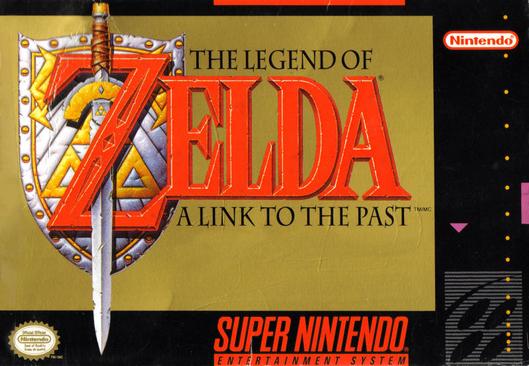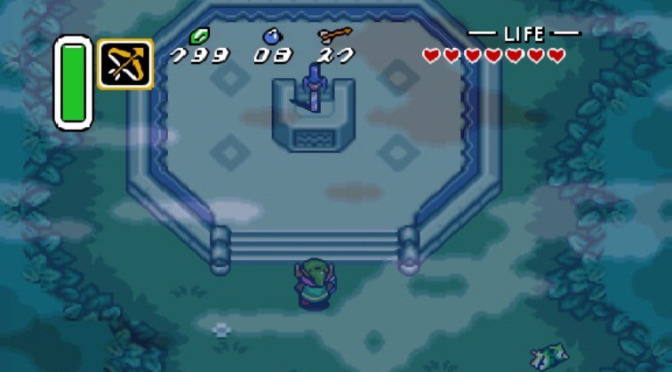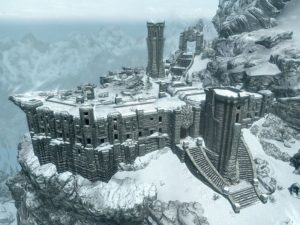
Yesterday I finished up a playthrough of the SNES classic The Legend of Zelda: A Link to the Past and it got me thinking about how the concept of separate dimensions that the player characters must travel between during the game could work in a tabletop roleplaying game experience. For those of you who may not have experienced the game, Link to the Past had the titular Link ripping back and forth between the light world and the dark world to rescue the Princess Zelda and to stop Ganon from being able to marshal his forces and take over both realities.
Agahnim, a wizard who has usurped the throne, is planning to break a seal made hundreds of years ago by the Seven Sages to imprison the dark wizard Ganon in the Dark World, which was known as the Sacred Realm before Ganon invaded it, obtained the Triforce, and used its power to engulf the realm in darkness. Agahnim intends to break the seal by sending the descendants of the Seven Sages into the Dark World. The only thing that can defeat Agahnim is the Master Sword, a sword forged to fight evil that can only be wielded by the chosen hero. To prove that he is worthy to wield it, Link needs three magic pendants, hidden in dungeons guarded by mythical defenders. Link then faces Agahnim in battle and defeats him, but Agahnim’s last act is to send Link to the Dark World as well.

To save Hyrule, Link must rescue the descendants of the Seven Sages from dungeons scattered across the Dark World. Once the seven maidens are freed, they use their power to break the barrier around Ganon’s Tower, where Link faces Agahnim for a second time, after which Ganon rises from Agahnim’s body, turns into a bat, and flies away. Link chases Ganon and confronts him inside the Pyramid of Power at the center of the Dark World. After a battle resulting in Ganon’s demise, Link touches the Triforce and restores the Dark World and Hyrule to their previous state.*
The Dark World is a mirror of the Light World, sometimes similar, sometimes wildly different. For example, the plains around Lake Hylia are the same in both worlds, but a location that is a desert in the light world is a fetid swamp in the Dark World. Early in your quest, you obtain a special mirror that allows you to warp from the Dark World back to the Light World at any time; however, you can only warp to the Dark World at certain places on the map, leading to some classic Legend of Zelda puzzle solving.
As I see it, there are a few key things about this kind of set up that could be worth exploring in a tabletop roleplaying game like Dungeons and Dragons which I’ll elaborate on below.
Cosmology School
This type of world allows you to really play with a nonstandard or contained cosmology. In dealing with two distinct yet similar dimensions, you might not be able to fit in the “standard” cosmology and opt for something smaller and more contained. Maybe the Material Plane is the only thing that exists and the second reality is really the beginning of its fracturing. In this case, the player characters might be instrumental in the creation of the rest of the planes and how they’re organized. Alternatively, you might simply have a few planes that comprise the major forces of the world and have them interact with the realities differently. You may have the four elemental planes that rotate around the first dimension be “tidally locked” in the alternate dimension, leading to a strange mirror of those planes represented in that version that the player characters must contend with. Do demons, devils, and angels exist in this setting? How does their existence interact with these changes between the dimensions?

Echoes of Light, Traces of Shadow
One of the neatest ways you can inject some mystery and verisimilitude between these two dimensions is to let them “bleed” through and show their presence within the other reality. Maybe the highest point of a mountain peak in the “light world” is surrounded by a never ending storm that spends it’s endless fury against the foreboding monastery that sits there. And perhaps the dark forest has a glade controlled by nymphs, unicorns, or other creatures of goodness that can serve as a respite for beleaguered heroes as they travel through the “dark world” in search of their goal.
Location, Location, Location!
This type of set up allows you to get a lot of mileage out of a finite map by letting you introduce another area to explore with its own secrets and surprises in the alternate dimension. While not every location needs to (or even should have) a similar location between the two dimensions, you can absolutely give your players some surprises while keeping your overall list of locations smaller than you might otherwise.
As you can guess, I’ve really only scratched the surface of things that you could do with this type of setting. But I’m curious as to how you would add your own twist on this type of game. What kind of connecting plot (or plots) would you run for your players?
*Paraphrased from Wikipedia.

Ben, you should take a look at a thing that Ben Dowell did: https://www.drivethrurpg.com/product/217600